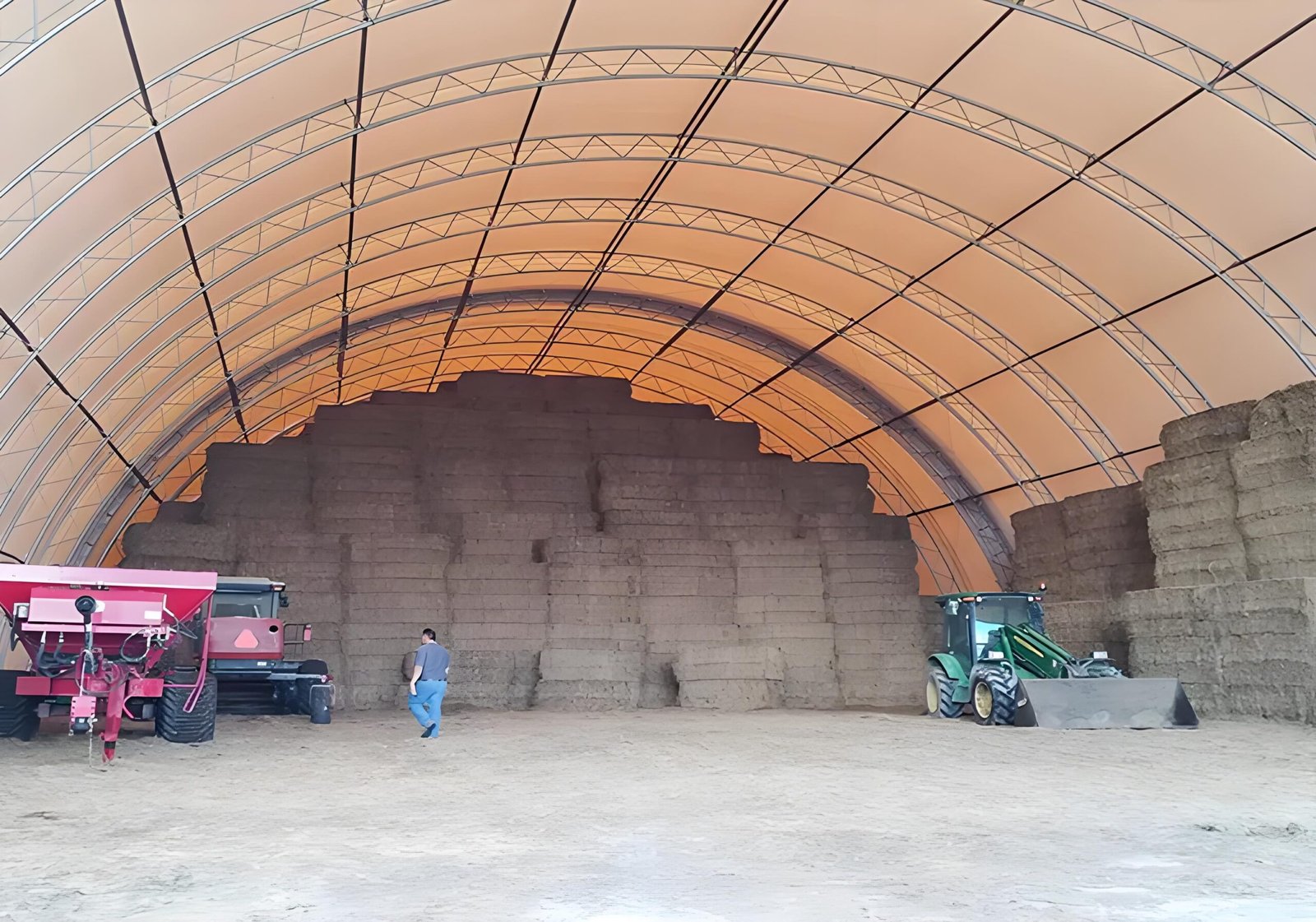Fabric Building
What is a Fabric Building/Hoop Building
A fabric building is a structure that uses fabric, usually made of durable materials such as polyethylene, PVC or other synthetic textiles, as its primary exterior covering. These buildings can be used for a variety of applications, including agricultural storage, industrial facilities, sports stadiums and event spaces.
Main Features of Fabric Buildings:
1.Structure: Fabric buildings typically have a frame made of steel, aluminum or other materials that supports the fabric covering. Designs can be temporary or permanent, depending on the intended use.
2.Lightweight: The materials used in fabric buildings are generally lighter than traditional building materials, making them easier to transport and install.
3.Versatile Design: The size, shape and layout of fabric buildings can be customized to specific needs, making them suitable for a wide range of functions.
4.Natural Lighting: Many fabric structures allow natural light to enter, reducing artificial lighting and creating a more pleasant environment.
5.Cost-Effective: They are more expensive to build and maintain than traditional buildings, especially for large spaces.

Advantages of Fabric Buildings:
1. Quick Installation: Fabric buildings can often be erected in a shorter time than conventional structures, making them ideal for emergency needs.
2. Energy Efficiency: The insulating properties of certain fabric materials help maintain temperature, potentially reducing heating and cooling costs.
3. Durability: Quality fabrics can withstand varying weather conditions, including wind, rain, and snow, depending on the design and construction.
4. Flexibility: Structural buildings can be designed to be removable, allowing for relocation or reconfiguration as needs change.
5. Low Maintenance: These structures often require less maintenance than traditional buildings, and the materials are
corrosion-resistant.
6. Sustainability: Many fabric buildings can be designed with environmentally friendly materials and practices in mind, contributing to
sustainable construction efforts.
7. Enhanced Airflow: The design often promotes better ventilation, which can be beneficial for certain applications, such as agricultural uses.
Applications of Fabric Buildings:
* Agricultural Uses: Storage of hay, equipment, and livestock shelters.
* Industrial Uses: Warehousing, manufacturing, and workshop spaces.
* Recreational uses: sports facilities, stadiums and event venues.
* Commercial uses: retail spaces, showrooms and temporary structures for events.
Overall, fabric buildings offer a versatile and efficient solution for a wide range of applications, combining functionality with cost-effectiveness.



